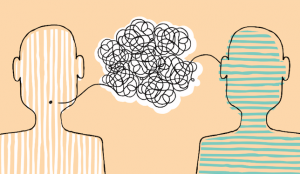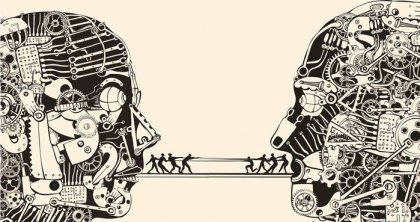Paul Watzlawick and the Theory of Human Communication

According to Austrian psychologist Paul Watzlawick, communication plays a fundamental role in our lives and society. Most of us, however, don’t realize to what extent. From the very beginning of our lives, we participate in the process of acquiring rules about communication. These rules are embedded in our relationships, though we aren’t necessarily aware of it.
Little by little, we learn what to say and how to say it. We learn about the multiple forms of communication that exist in our everyday lives. It’s hard to believe that such a complicated process goes almost unnoticed and we automate it almost without conscious effort.
Without communication, human beings wouldn’t have been able to advance or evolve into what we are now. So what are these details of communication that allow us to relate to each other? What are these ins and outs that we barely notice, but are so important? Let’s dig a little deeper…
“One cannot not communicate”
-Paul Watzlawick-

Watzlawick and his vision of communication
Paul Watzlawick (1921-2007) was an Austrian psychologist, often referenced in family and systemic therapy. He is internationally recognized for The Art of Becoming Bitter, published in 1983. Watzlawick received his doctorate in philosophy and studied psychotherapy at the Carl Jung Institute in Zurich. He was also a professor at Stanford University.
Watzlawick, together with Jane Beavin Bavelas and Don D. Jackson in the Mental Research Institute of Palo Alto, developed the theory of human communication. This is the cornerstone of family therapy. It explains communication not as an internal process that comes from the subject, but as the fruit of an information exchange that originates from a relationship.
From that viewpoint, the importance isn’t so much in how we communicate or if it is aware or not. Rather, how we communicate in the present and how we influence each other really becomes the crux of communication. Let’s take a look at the fundamental principles of the theory of human communication. What can we learn from it?
The 5 axioms of the Theory of Human Communication
It is impossible not to communicate
Communication is inherent in life. What Paul Watzlawick and his colleagues mean by that is that all behavior is a form of communication in and of itself. This is true on an explicit or implicit level. Even being silent is a way of communicating some kind of message. So it’s impossible not to communicate. Non-communication doesn’t exist.
Even when we do nothing, verbally or non-verbally, we are transmitting something. Maybe we aren’t interested in what the other person is saying. Or, we simply prefer not to share our opinion. There is more information in the “message” than that which is put into words.
Communication has a content level and a relational level (metacommunication)
This principle refers to the fact that in all communication, not only the meaning of the message is important (content level) but also the way that the speaker would like to be understood and how he or she tries to be understood by others (relational level).
When we relate to each other, we transmit information. But, the quality of our relationship can give a different meaning to that same information.

The content aspect corresponds to what we communicate verbally. The relational aspect, on the other hand, refers to how we communicate this message. It has to do with tone of voice, facial expression, context, etc. The second aspect determines and influences the first. That is because our tone or expression changes how the listener receives the message.
Punctuation shapes the meaning according to the person
Paul Watzlawick explained the third tenant like this: “The nature of a relationship is dependent on the punctuation of the partners’ communication procedures.” With that, he means that each one of us creates our own version of what we observe and experience. That version then colors our relationships.
This principle is fundamental when we relate to other people. We should always keep in it mind every time we interact with someone. We filter all the information that we receive based on our experiences, personal characteristics, and lessons. That means that one concept (love, friendship, trust, etc.) can have different meanings for different people.
In addition, another key aspect of communication is that each speaker believes that the behavior of the other person is the cause of his behavior. However, the truth is that communication is a much more complex process and can’t be reduced to a simple cause and effect relationship. Communication is a cyclical process in which each party contributes in a unique way to the moderation of the exchange.

Digital and analog communication
The theory of human communication proposes that there are two types of communication:
- Digital. What you say with words, which are the vehicle that contains the communication.
- Analogic. All non-verbal communication, or how express yourself. The vehicle of the relationship.
Symmetrical and complementary communication
Lastly, this tenant talks about how werelate to others. Sometimes we relate to people under equal conditions, but sometimes we are operating from different planes. When the relationship is symmetrical, we are on the same plane. That is, we are operating in equal conditions and have equal power in the exchange, but we don’t complement each other.
When the relationship is complementary, like parent-child, teacher-student, or buyer-seller relationships, we are in unequal conditions. But, we accept these differences.
Taking all this into account, we can come to the conclusion that in every communication situation, the important thing that we should pay attention to is the relationship itself: how the two people interact and not so much their individual roles.
Bibliographic references
Ceberio, Marcelo R. (2006). La buena comunicación. Las posibilidades de la interacción humana. Barcelona: Paidós.
This text is provided for informational purposes only and does not replace consultation with a professional. If in doubt, consult your specialist.








